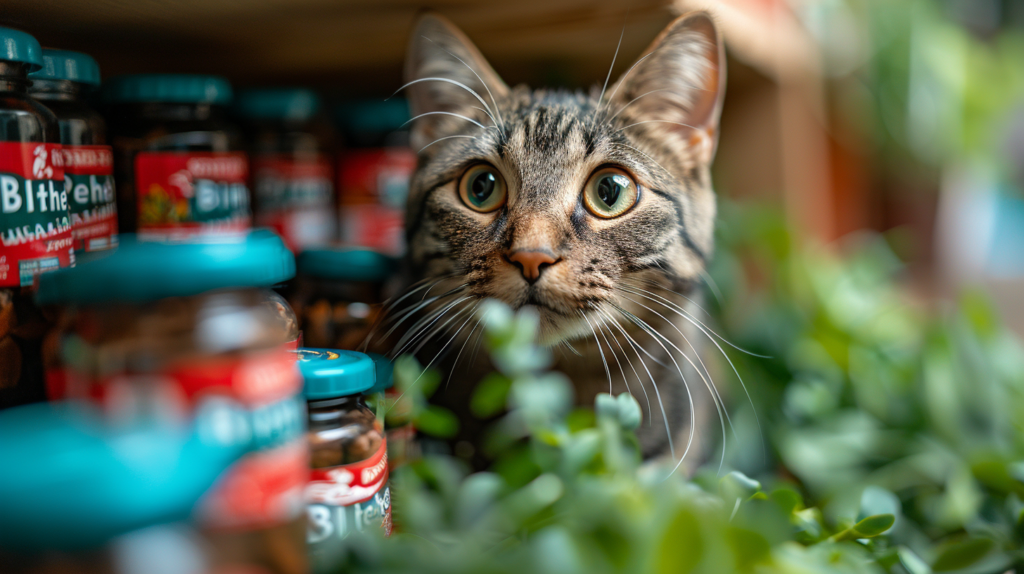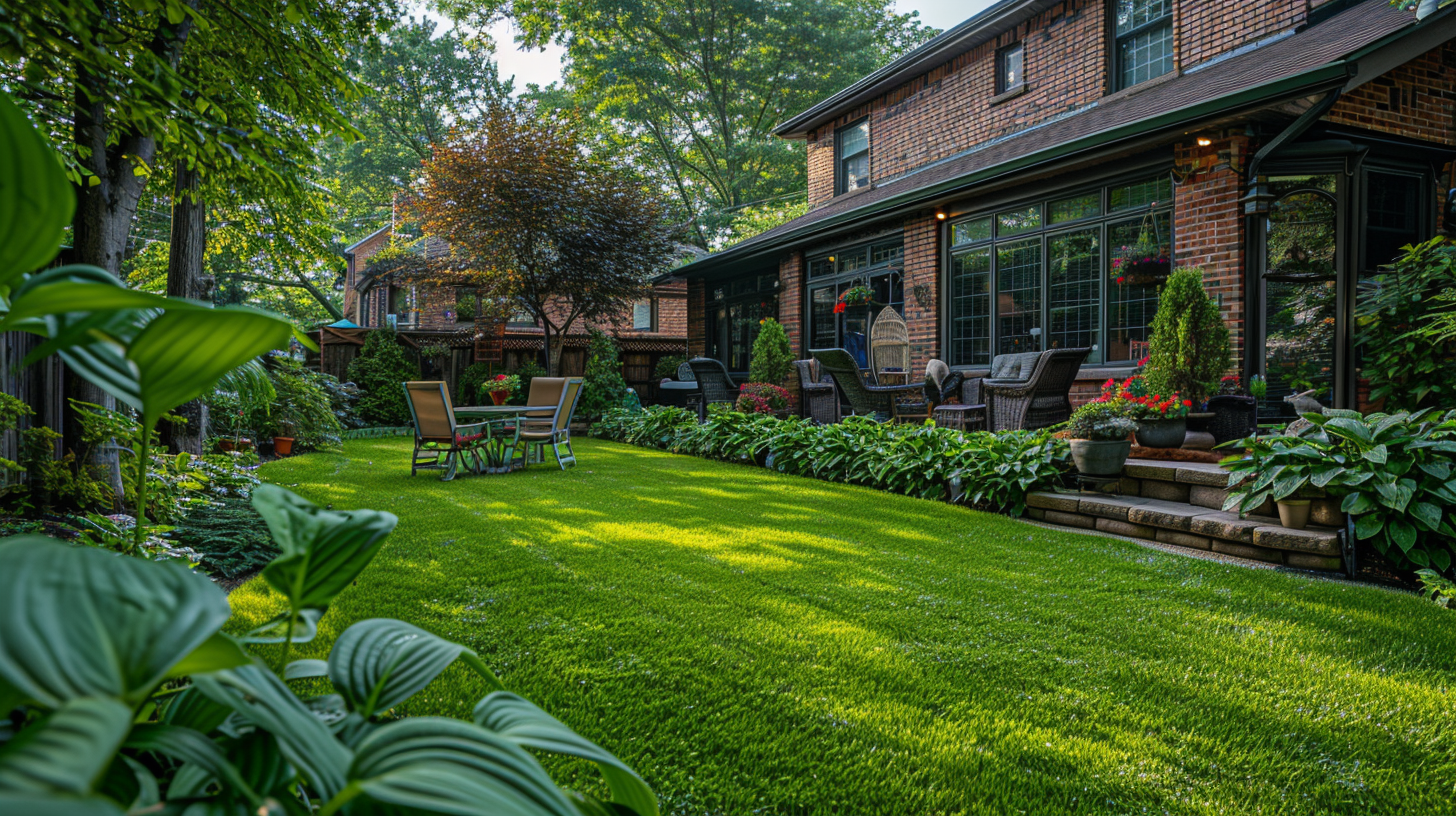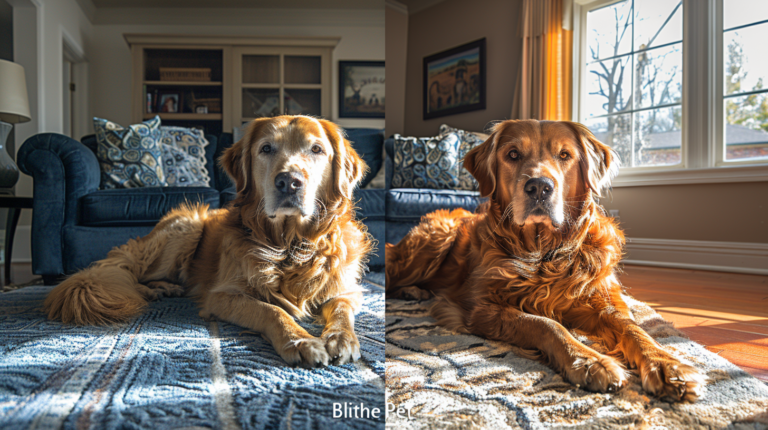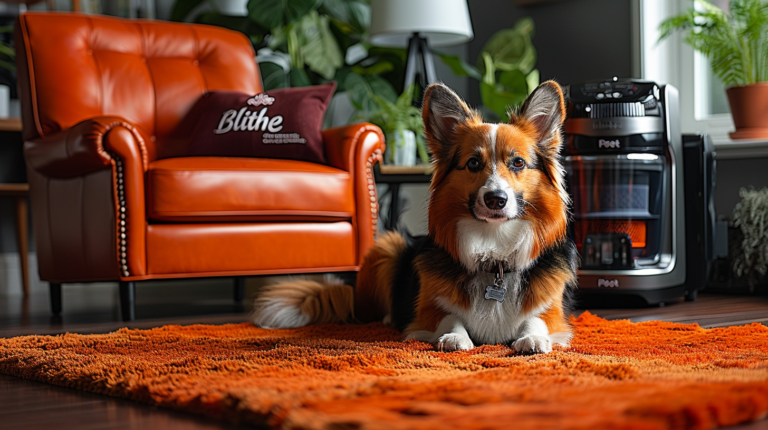Discover 6 powerful pet safe weed killer options that protect your furry friends while eliminating weeds. Learn the hidden risks and expert tips from veterinarians.
Table of Contents
Did you know that over 70% of pet poisoning cases involve common household chemicals, with lawn care products ranking among the top culprits? If you’re a pet owner struggling to maintain a beautiful yard while keeping your beloved companions safe, you’re not alone. The search for an effective pet safe weed killer has become a top priority for millions of households across America and Europe.
Traditional weed killers contain harsh chemicals like glyphosate and paraquat that can cause severe health complications in pets, ranging from gastrointestinal upset to respiratory problems and even death. According to a study performed in 2012, the use of pesticides in lawns and parks helped increase the rate of the cancer lymphoma in dogs by 70%. This alarming statistic has prompted veterinarians and pet safety experts to advocate for safer alternatives.
When I first adopted my rescue dog Max from a shelter in Colorado three years ago, I quickly learned that my weekend warrior approach to lawn care needed a complete overhaul. After Max got sick from licking his paws after walking on freshly treated grass, I realized I needed to find pet safe weed killer options that wouldn’t compromise his health or my landscaping goals.
Fortunately, the market for pet safe weed killer solutions has expanded dramatically, offering powerful alternatives that effectively eliminate unwanted vegetation without endangering your four-legged family members. This comprehensive guide will explore six proven pet-friendly weed control methods, reveal two hidden risks even “safe” products can pose, and provide you with expert veterinarian-approved strategies for maintaining both a beautiful yard and healthy pets.
What Makes a Weed Killer Pet Safe?

Understanding the science behind pet safe weed killer formulations is crucial for making informed decisions about your lawn care routine. Newer pet-safe or pet-friendly herbicides/weed killers have nixed the toxic chemicals and replaced them with safer, all-natural ingredients such as vinegar, soap, or saltwater to effectively kill unwanted weeds and grasses.
Key Characteristics of Pet Safe Weed Killers
Non-Toxic Active Ingredients: The best pet safe weed killer products utilize natural acids, plant-based oils, and organic compounds that break down quickly in the environment. Common safe ingredients include:
- Acetic acid (vinegar) concentrations between 10-30%
- Citric acid derived from citrus fruits
- Essential oils like clove, peppermint, and rosemary
- Iron-based compounds that target specific weeds
- Corn gluten meal for pre-emergent control
Rapid Biodegradation: Unlike synthetic chemicals that can persist in soil for months, pet safe formulations typically break down within 24-48 hours of application. This rapid decomposition minimizes the window of potential pet exposure while maintaining effectiveness against target weeds.
pH Balance Considerations: Quality pet safe weed killers maintain soil pH levels that won’t harm beneficial microorganisms or create conditions that could irritate pet paw pads. Most effective formulations maintain a pH between 6.0-7.5.
How Pet Safe Weed Killers Work
These natural formulations operate through different mechanisms than traditional synthetic herbicides:
Contact Action: Most pet safe weed killers work by directly contacting plant tissues and disrupting cellular membranes, causing rapid dehydration and death. This contact-based approach means treated weeds typically show visible results within 2-6 hours.
Systemic Absorption: Some iron-based pet safe products work systemically, being absorbed through roots and transported throughout the plant. These tend to be more effective on perennial weeds with deep root systems.
Pre-Emergent Barriers: Natural pre-emergent pet safe weed killers like corn gluten meal create a barrier that prevents weed seeds from germinating without affecting established plants or posing risks to pets.
| Product Type | Active Ingredient | Effectiveness Rating | Coverage Area | Results Timeline | Price Range | Best For |
|---|---|---|---|---|---|---|
| Green Gobbler 20% Vinegar PET SAFE | 20% Acetic Acid | 9/10 | 1,000 sq ft per gallon | 2-4 hours | $25-35/gallon | Annual weeds, spot treatments |
| Natural Armor Weed Killer PET SAFE | Vinegar + Citrus + Salt | 8.5/10 | 1,000 sq ft per gallon | 4-24 hours | $30-40/gallon | Mixed weed types, pleasant scent |
| Iron-Based Herbicide PET SAFE | Iron Sulfate | 8/10 | 2,500 sq ft per bag | 7-14 days | $20-30/bag | Lawn weeds, selective control |
| Corn Gluten Meal PET SAFE | Natural Proteins | 7.5/10 | 1,000 sq ft per 20 lbs | Prevention only | $15-25/bag | Pre-emergent prevention |
| Boiling Water PET SAFE | Heat Treatment | 9/10 | Limited by volume | Immediate | $0.05/gallon | Spot treatments, cracks |
| Essential Oil Blend PET SAFE | Clove + Peppermint Oils | 7/10 | 500 sq ft per gallon | 6-48 hours | $35-50/gallon | Young weeds, pleasant scent |
The 6 Most Powerful Pet Safe Weed Killer Options
1. Green Gobbler 20% Vinegar Weed Killer
Effectiveness Rating: 9/10
Green Gobbler's concentrated vinegar solution represents the gold standard in pet safe weed control. Green Gobbler pet-safe weed killer is safe for pets and people, this eco-friendly weed killer made by Natural Armor contains no glyphosate and kills many weeds within 24 hours.
Key Features:
- 20% acetic acid concentration (4x stronger than household vinegar)
- Ready-to-use spray application
- Works on over 250 weed and grass species
- Results visible within 2-4 hours
- Safe for use around children and pets once dried
Best Uses: Annual weeds, young perennial weeds, driveway cracks, sidewalk edges, and spot treatments in landscaped areas.
Application Tips: Apply during sunny, dry conditions for maximum effectiveness. Avoid spraying desirable plants as vinegar is non-selective.
2. Natural Armor Weed & Grass Killer
Effectiveness Rating: 8.5/10
This premium pet safe weed killer combines multiple natural acids with citrus extracts for enhanced effectiveness. The inclusion of citrus ingredients helps improve penetration and provides a pleasant scent during application.
Key Ingredients:
- Acetic acid (vinegar base)
- Citric acid from natural citrus
- Sodium chloride (salt)
- Essential oil blend
- Glycerin for improved adherence
Coverage: One gallon treats approximately 1,000 square feet of moderate weed coverage.
Performance: Shows visible results within 24 hours on most annual weeds and grasses. May require multiple applications for tough perennial weeds.
3. Iron-Based Selective Herbicides
Effectiveness Rating: 8/10
Iron-based pet safe weed killers offer a unique advantage: they selectively target broadleaf weeds while leaving grass unharmed. This makes them ideal for treating weeds within established lawns.
How It Works: Iron sulfate creates conditions that favor grass growth while making the environment hostile to broadleaf weeds like dandelions, clover, and plantain.
Application Timing: Best applied during active growing seasons (spring and fall) when weeds are actively absorbing nutrients.
Pet Safety: Iron-based products are generally safe for pets, though it's recommended to keep animals off treated areas until the first watering or rainfall.
4. Corn Gluten Meal Pre-Emergent
Effectiveness Rating: 7.5/10
For pet owners focusing on prevention, corn gluten meal represents an excellent pre-emergent pet safe weed killer option. This natural byproduct of corn processing prevents weed seeds from germinating without affecting established plants.
Application Window: Must be applied before weed seeds germinate (typically early spring, 2-4 weeks before last frost).
Dual Benefits: Acts as both weed prevention and natural fertilizer, providing slow-release nitrogen to established plants.
Limitations: Only prevents new weeds from germinating; won't kill existing weeds.
5. Boiling Water Treatment
Effectiveness Rating: 9/10
The simplest and most cost-effective pet safe weed killer is literally in your kitchen. Boiling water provides immediate, chemical-free weed control that's 100% safe for pets.
Best Applications:
- Driveway and sidewalk cracks
- Patio joints
- Isolated weed patches
- Areas where replanting isn't planned
Effectiveness: Kills weeds instantly through thermal shock. Most effective on annual weeds and young perennial shoots.
Considerations: Will kill any plant it contacts, including desirable vegetation. Results are immediate but may require repeat applications for deep-rooted perennials.
6. Essential Oil-Based Formulations
Effectiveness Rating: 7/10
Commercial pet safe weed killers utilizing essential oils offer a gentler approach while maintaining reasonable effectiveness against common weeds.
Common Essential Oil Ingredients:
- Clove oil (eugenol) - primary active ingredient
- Peppermint oil - enhances penetration
- Rosemary oil - provides additional herbicidal action
- Thyme oil - natural antimicrobial properties
Advantages: Pleasant scent, biodegradable, safe for organic gardening, won't harm beneficial insects when used properly.
Application Notes: Works best on young, tender weeds. May require multiple applications for established perennial weeds.
The 2 Hidden Risks of "Pet Safe" Weed Killers
Hidden Risk #1: Concentration and Application Timing
Even the safest pet safe weed killer can pose risks when improperly applied or used in excessive concentrations. Weed killer can remain toxic to dogs for several days to weeks, depending on the type of herbicide used. It's important to keep pets away from treated areas until the product has completely dried and dissipated to prevent exposure.
Common Mistakes:
- Over-application thinking "more is better"
- Applying during wet conditions that delay drying
- Allowing pets immediate access to treated areas
- Mixing different products without understanding interactions
Safety Protocol: Always follow label directions precisely and maintain a 24-48 hour pet exclusion period, even for "safe" products.
Hidden Risk #2: Secondary Exposure Through Contaminated Objects
Pets can experience delayed exposure to weed control products through contaminated toys, food bowls, or bedding left in treated areas. This secondary exposure pathway is often overlooked by well-intentioned pet owners.
Prevention Strategies:
- Remove all pet items from treatment areas before application
- Thoroughly rinse any accidentally exposed items
- Use dedicated application tools that aren't used for other purposes
- Store all weed control products in pet-proof containers
| Time Period | Safety Status | Pet Access | Key Actions Required | Warning Signs to Watch | Emergency Protocol |
|---|---|---|---|---|---|
| 0-2 Hours (Immediate Application) |
NO ACCESS | Complete exclusion required |
• Secure pets indoors/away from area • Remove all pet items • Monitor weather conditions |
Product still wet and highly concentrated Risk Level: Highest |
If accidental exposure: rinse immediately, call vet |
| 2-6 Hours (Drying Phase) |
RESTRICTED | Visual supervision only |
• Check for complete surface drying • Test small areas for tackiness • Continue weather monitoring |
• Excessive paw licking • Drooling or mouth irritation • Unusual behavior |
Document time of exposure, contact veterinarian |
| 6-24 Hours (Initial Safety Window) |
SUPERVISED | ✓Limited supervised access |
• Allow brief, supervised visits • Monitor pet behavior closely • Prevent eating/drinking in area |
• Vomiting or nausea • Loss of appetite • Skin irritation on paws |
Remove pet immediately, rinse affected areas |
| 24-48 Hours (Extended Monitoring) |
CAUTIOUS | ✓Normal access with monitoring |
• Resume normal outdoor activities • Continue behavioral observation • Document any delayed reactions |
• Delayed digestive issues • Changes in energy levels • Respiratory symptoms |
Schedule veterinary consultation for evaluation |
| 48+ Hours (Full Clearance) |
NORMAL | ✓Unrestricted access |
• Return to normal routine • Assess weed control effectiveness • Plan follow-up treatments if needed |
Continue general health monitoring Risk Level: Minimal |
Standard veterinary care protocols apply |
Expert Tips for Safe Application
Timing Your Applications
Weather Conditions: Apply pet safe weed killer during dry, sunny conditions with temperatures between 60-85°F. Avoid application before rain, which can reduce effectiveness and potentially create runoff issues.
Seasonal Timing: Target weeds during their active growing phases for maximum effectiveness:
- Spring: Focus on emerging annuals and winter weeds
- Early Summer: Target established perennials before seed production
- Fall: Apply pre-emergent treatments for next year's prevention
Application Techniques
Spot Treatment Method: Rather than broadcast applications, use targeted spot treatments to minimize product use and reduce pet exposure areas.
Equipment Selection: Use dedicated sprayers or applicators to prevent cross-contamination with other garden chemicals.
Coverage Patterns: Apply in calm conditions to prevent drift onto desirable plants or areas where pets frequently travel.
Post-Application Management
Drying Time: Even pet safe weed killers should be allowed to dry completely before pet access. This typically requires 2-4 hours in optimal conditions.
Watering Schedule: Most natural weed killers work best when not immediately watered. Wait 6-24 hours before resuming normal irrigation.
Monitoring Results: Document treatment effectiveness to optimize future applications and identify areas requiring additional attention.
Warning Signs: When Pet Safe Weed Killers Cause Problems
Despite their improved safety profile, pet safe weed killers can still cause issues if pets are exposed before proper drying or in excessive quantities. Recognizing early warning signs can prevent serious complications.
Immediate Symptoms (Within 2-4 Hours)
Gastrointestinal Signs:
- Excessive drooling or salivation
- Vomiting (especially if product was directly ingested)
- Loss of appetite
- Diarrhea or unusual stool consistency
Skin and Eye Irritation:
- Red, irritated paw pads
- Excessive licking of paws or legs
- Eye discharge or squinting
- Skin redness where contact occurred
Delayed Symptoms (24-48 Hours Later)
Behavioral Changes:
- Lethargy or unusual tiredness
- Loss of interest in normal activities
- Changes in drinking or urination patterns
- Difficulty walking or coordination issues
Respiratory Signs: While rare with pet safe products, concentrated exposures can cause:
- Increased panting or breathing difficulty
- Coughing or throat clearing
- Nasal discharge
When to Consult Your Veterinarian
Immediate Veterinary Attention Required
Contact your veterinarian immediately if your pet exhibits any of the following after potential weed killer exposure:
Emergency Signs:
- Persistent vomiting (more than 2-3 episodes)
- Signs of dehydration (dry gums, lethargy, skin tenting)
- Difficulty breathing or excessive panting
- Seizures or neurological symptoms
- Collapse or inability to stand
Routine Veterinary Consultation
Schedule a non-emergency veterinary consultation for:
Ongoing Concerns:
- Mild symptoms persisting beyond 24 hours
- Repeated exposure incidents
- Questions about specific product safety
- Development of a pet safety protocol for your property
Preventive Planning: Discuss your lawn care routine with your veterinarian during regular check-ups to ensure your chosen pet safe weed killer aligns with your pet's specific health needs.
Common Mistakes Pet Owners Make
Mistake #1: Assuming All "Natural" Means Safe
Natural doesn't automatically equal pet-safe. Some natural substances can be highly concentrated and potentially harmful. Essential oils, while generally safer than synthetic chemicals, can cause skin irritation or digestive upset in sensitive pets.
Solution: Research specific ingredients and follow all label directions, regardless of "natural" claims.
Mistake #2: Inadequate Area Preparation
Many pet owners skip proper preparation steps that maximize both effectiveness and safety.
Common Oversights:
- Failing to remove pet toys and food bowls
- Not checking weather forecasts before application
- Applying to wet or damp surfaces
- Ignoring wind conditions that cause drift
Mistake #3: Inconsistent Application Methods
Problems:
- Using different application rates in different areas
- Mixing products without understanding interactions
- Failing to maintain accurate records of treatment areas
- Not following up with monitoring and reapplication as needed
Mistake #4: Inadequate Storage and Disposal
Even pet safe weed killers require proper storage to maintain effectiveness and prevent accidental exposure.
Best Practices:
- Store in original containers with intact labels
- Keep in cool, dry locations away from pet access
- Dispose of unused products according to local regulations
- Never store in food or drink containers
| Symptom Category | Specific Signs | Typical Timeline | Severity Level | Immediate Action Required | When to Call Vet |
|---|---|---|---|---|---|
| Skin & Paw Irritation |
• Mild redness on paw pads • Light scratching or licking • Minor skin sensitivity • Slight limping on affected paw |
Immediate to 2 hours post-exposure | MILD |
Rinse with cool water
• Wash paws thoroughly• Pat dry gently • Monitor for worsening |
If symptoms persist >24 hours or worsen |
| Gastrointestinal Upset |
• Excessive drooling • Mild nausea (lip licking) • Loss of appetite • Single episode of vomiting • Loose stool |
30 minutes to 6 hours post-exposure | MODERATE |
Remove from area, offer water
• Prevent further ingestion• Monitor closely • Withhold food temporarily |
If vomiting occurs more than once or persists |
| Respiratory Distress |
• Increased panting • Difficulty breathing • Coughing or wheezing • Nasal discharge • Open-mouth breathing in cats |
15 minutes to 2 hours post-exposure | SEVERE |
Move to fresh air immediately
• Remove from contaminated area• Keep calm and quiet • Prepare for vet transport |
IMMEDIATELY - Call vet or emergency clinic |
| Severe Gastrointestinal |
• Multiple vomiting episodes • Severe diarrhea • Blood in vomit or stool • Abdominal pain (hunched posture) • Dehydration signs |
1-8 hours post-exposure | SEVERE |
Stop all food/water intake
• Document symptoms• Collect vomit sample • Prepare for emergency visit |
IMMEDIATELY - Emergency veterinary care needed |
| Neurological Signs |
• Seizures or tremors • Loss of coordination • Extreme lethargy • Unresponsiveness • Abnormal behavior/confusion |
30 minutes to 4 hours post-exposure | EMERGENCY |
IMMEDIATE VETERINARY CARE
• Do not induce vomiting• Keep pet warm and quiet • Transport immediately • Call ahead to vet |
CALL IMMEDIATELY - Life-threatening emergency |
| Systemic Collapse |
• Collapse or inability to stand • Pale or blue gums • Weak or rapid pulse • Cold extremities • Unconsciousness |
Immediate to 2 hours post-exposure | EMERGENCY |
EMERGENCY TRANSPORT REQUIRED
• Check breathing/pulse• Keep airway clear • Transport immediately • Begin CPR if needed |
CALL IMMEDIATELY - Critical emergency |
| Eye & Mucous Membrane |
• Red, watery eyes • Squinting or pawing at eyes • Discharge from eyes/nose • Red or irritated gums • Excessive tear production |
Immediate to 1 hour post-exposure | MODERATE |
Flush with clean water
• Rinse eyes gently• Prevent rubbing • Remove from contaminated area |
If symptoms don't improve within 2-4 hours |
Step-by-Step Safe Application Guide
Pre-Application Preparation (Day Before)
- Weather Check: Verify 24-48 hour forecast shows no rain and moderate temperatures (60-85°F)
- Area Survey: Identify all weeds requiring treatment and mark areas if necessary
- Pet Item Removal: Clear all pet toys, bedding, food bowls, and recreational items from treatment zones
- Equipment Check: Ensure all application equipment is clean and functioning properly
- Product Preparation: Read label directions and prepare only the amount needed for immediate use
Application Day Protocol
Morning Preparation (6-8 AM):
- Final Weather Confirmation: Ensure conditions remain favorable
- Pet Containment: Secure pets in designated safe areas away from treatment zones
- Product Mixing: Prepare pet safe weed killer according to label directions
- Equipment Setup: Assemble sprayers or applicators with appropriate settings
Application Process (8-10 AM):
- Systematic Coverage: Work in predetermined patterns to ensure complete coverage without overlap
- Targeted Application: Focus on weed-dense areas while avoiding desirable plants
- Documentation: Record areas treated, products used, and application rates
- Equipment Cleaning: Thoroughly clean all application equipment immediately after use
Post-Application Management
Immediate Monitoring (0-4 Hours):
- Maintain pet exclusion from treated areas
- Monitor weather conditions for unexpected changes
- Observe initial weed response for effectiveness assessment
Extended Monitoring (4-24 Hours):
- Continue pet exclusion until complete drying occurs
- Assess weed kill effectiveness
- Document results for future reference
Follow-Up Care (24-48 Hours):
- Gradually reintroduce pet access to treated areas
- Monitor pets for any unusual behavior or symptoms
- Plan follow-up treatments if necessary
Myth-Busting: Separating Fact from Fiction
Myth #1: "Pet Safe Weed Killers Don't Work as Well as Chemical Ones"
The Truth: While pet safe options may require more frequent applications for tough perennial weeds, they can be equally effective for annual weeds and general weed control. ECO Garden PRO natural weed killer solution is safe for bees, soil, groundwater, fish, livestock, pets, and people. It's so natural that I even felt safe using it on weeds around the edge of my garden flower beds and vegetable patch. It's gentle on the planet...but brutal on weeds.
Reality Check: Success with pet safe weed killers often requires:
- Proper timing of applications
- Appropriate product selection for target weeds
- Consistent follow-up treatments
- Integration with cultural control methods
Myth #2: "Homemade Solutions are Always Safer Than Commercial Products"
The Truth: While homemade pet safe weed killer solutions can be effective, commercial formulations often provide more consistent results and undergo safety testing that homemade mixtures may lack.
Considerations:
- Commercial products have standardized concentrations
- Professional formulations often include surfactants for better coverage
- Quality control ensures consistent effectiveness
- Label directions provide tested application guidelines
Myth #3: "You Can Let Pets Back Immediately After Application"
The Truth: Even the safest pet safe weed killer requires a drying period before pet access. Keep dogs off areas of grass where a weed killer has been applied while the product is still wet. Allowing the product to dry thoroughly is essential for pet safety.
Safe Practices:
- Always allow complete drying before pet access
- Consider weather conditions that affect drying time
- Monitor pets closely during their first return to treated areas
- Maintain treatment records to track safety protocols
Alternative Strategies for Pet-Friendly Weed Control
Cultural Control Methods
Dense Lawn Establishment: The best defense against weeds is a thick, healthy lawn that naturally outcompetes unwanted vegetation. Proper fertilization, overseeding, and watering create conditions that favor grass over weeds.
Mulching Strategies: Organic mulches in flower beds and around trees create natural weed barriers while improving soil health. Pet-safe mulch options include:
- Shredded hardwood
- Pine bark chunks
- Straw (ensure it's seed-free)
- Coconut coir
Mechanical Control
Hand Weeding: For small areas or spot treatments, hand weeding remains the safest option for pet owners. Best practiced when soil is moist, making weed removal easier and more complete.
Mowing Strategies: Regular mowing at proper heights prevents weeds from setting seed while encouraging grass density. Most cool-season grasses perform best when mowed at 2.5-3.5 inches.
Integrated Approach Benefits
Combining pet safe weed killer applications with cultural and mechanical methods provides:
- Reduced chemical dependency
- Long-term weed suppression
- Improved overall lawn health
- Enhanced pet safety through diversified management
Seasonal Application Strategies
Spring Weed Control (March-May)
Primary Targets: Winter annuals, emerging summer annuals, early perennial growth
Recommended Approach:
- Apply pre-emergent pet safe weed killers in early spring
- Target emerged weeds with post-emergent treatments
- Focus on areas with thin grass coverage
Success Factors: Spring applications are most effective when weeds are young and actively growing. Cool, moist conditions may extend drying times, requiring longer pet exclusion periods.
Summer Management (June-August)
Primary Targets: Established annual weeds, perennial weeds in active growth
Strategy Adjustments:
- Apply treatments early morning or late evening to avoid heat stress
- Increase watering frequency to help treated areas recover
- Focus on spot treatments rather than broadcast applications
Heat Considerations: High temperatures can increase the effectiveness of contact-type pet safe weed killers but may also increase pet sensitivity to treated surfaces.
Fall Prevention (September-November)
Primary Targets: Late-season annuals, pre-emergent control for next year
Long-Term Planning:
- Apply pre-emergent treatments for winter annual prevention
- Target perennial weeds preparing for dormancy
- Overseed thin areas to prevent weed establishment
Weather Factors: Fall applications often benefit from optimal temperature and moisture conditions, providing excellent effectiveness with standard drying times.
Product Storage and Disposal
Safe Storage Practices
Location Requirements:
- Cool, dry area away from direct sunlight
- Temperature-stable environment (avoid garages subject to freezing)
- Secure area inaccessible to pets and children
- Well-ventilated space to prevent vapor accumulation
Container Integrity:
- Keep products in original containers with intact labels
- Check containers regularly for leaks or damage
- Never transfer products to food or beverage containers
- Maintain clear labeling on any diluted preparations
Proper Disposal Methods
Unused Products:
- Contact local waste management for hazardous waste collection days
- Many communities offer special collection events for lawn care products
- Never pour unused products down drains or onto soil
- Some pet safe weed killers may be suitable for household waste (check local regulations)
Empty Containers:
- Triple-rinse containers before disposal
- Use rinse water as part of normal application (following label rates)
- Recycle containers where local programs accept them
- Remove or obscure all product labels before disposal
Cost-Effectiveness Analysis
Initial Investment Comparison
Pet Safe Weed Killers:
- Higher per-gallon cost than synthetic alternatives
- Require more frequent applications for tough weeds
- Often provide smaller coverage areas per dollar spent
Long-Term Value Considerations:
- Reduced veterinary bills from pet poisoning incidents
- Lower environmental remediation costs
- Decreased liability for pet and human health impacts
- Improved soil health and beneficial organism preservation
Budget-Friendly Strategies
DIY Options:
- Vinegar-based solutions cost approximately 60% less than commercial pet safe products
- Boiling water treatment costs only energy and time
- Hand weeding eliminates product costs entirely
Efficiency Maximization:
- Targeted spot treatments reduce product usage
- Proper timing improves effectiveness per application
- Integrated management reduces overall treatment needs
Return on Investment
Most pet owners find that the peace of mind and reduced health risks justify the higher upfront costs of pet safe weed killer products. When factoring in potential veterinary expenses and the value of pet safety, these products often provide positive returns on investment.
Frequently Asked Questions
Pet Safe Weed Killer Expert Answers
How long should I wait before letting my dog back on the lawn after applying pet safe weed killer?
Can I make my own pet safe weed killer at home using household ingredients?
What should I do if my pet accidentally ingests pet safe weed killer?
Are pet safe weed killers effective on tough perennial weeds like dandelions?
Do pet safe weed killers harm beneficial insects like bees and butterflies?
How often can I safely apply pet safe weed killer to my lawn and garden?
Conclusion
Maintaining a beautiful, weed-free landscape while ensuring your pet's safety doesn't have to be an impossible balance. The six powerful pet safe weed killer options we've explored – from Green Gobbler's concentrated vinegar solution to iron-based selective herbicides – offer effective alternatives to traditional chemical treatments that put your furry family members at risk.
Remember that even the safest products require proper application techniques, adequate drying time, and ongoing monitoring for pet safety. The two hidden risks we've discussed – improper application timing and secondary exposure through contaminated objects – are easily preventable with proper planning and attention to detail.
As more pet owners become educated about the potential dangers of weed killer to dogs, there has been a growing awareness of the need to take precautions when using these products in outdoor spaces. By staying informed and choosing pet-safe alternatives, you're joining millions of responsible pet owners who refuse to compromise their companions' health for lawn care convenience.
The investment in pet safe weed killer products and proper application techniques pays dividends in peace of mind, pet health, and long-term landscape success. Your pets depend on you to make choices that protect their wellbeing – and with the information provided in this guide, you're well-equipped to maintain both a beautiful yard and happy, healthy companions.
Have a similar experience with your pet? Share it in the comments below! Don't forget to check out our other helpful guides at BlithePet.com.







